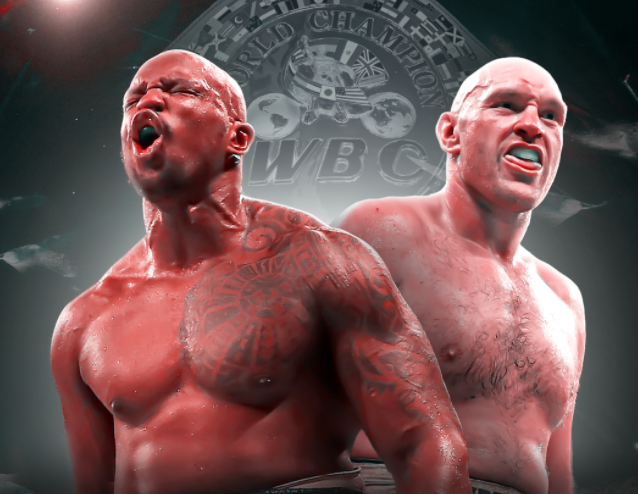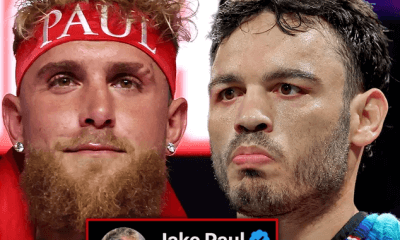Featured Articles
Boxing Odds and Ends: Notes on Fury-Whyte, Joshua-Usyk and the late Percy Pugh

“Tyson Fury vs Dillian Whyte confirmed…” begins the headline over a story in the sports section of today’s Manchester Evening News. That pronouncement takes a different twist in the sub-headline where readers are told that the Fury-Whyte match is seemingly confirmed (italics mine).
In the digital era, the race to be first with the news has resulted in many headlines that bear the stamp of a bait-and-switch ploy. Potential readers are more likely to click on to a story trumpeted with “etched in stone” verbiage.
That being said, it appears likely that Tyson Fury’s next fight will be an all-British affair with perennial #1 contender Dillian Whyte with the best guess that it will transpire in April at Principality Stadium in Cardiff, Wales where Anthony Joshua made two title defenses, drawing crowds of 75,000-plus for bouts with Carlos Takam and Joseph Parker. Principality is the second largest stadium in the world with a retractable roof.
The official announcement may come as soon as tomorrow. Back in December, the WBC decreed that Fury must fight Whyte next and scheduled a purse bid for Jan. 11. The date was pushed back when Fury’s promoters, Bob Arum and Frank Warren, made it known that they were willing to pay Whyte and Anthony Joshua step-aside money so that the Gypsy King could proceed directly to a match with WBA/IBF/WBO title-holder Oleksandr Usyk.
Dillian Whyte, who turns 34 in April, was scheduled to fight Otto Wallin this past October but pulled out, ostensibly because of a shoulder injury. Tyson Fury, never at a loss for a clever insult, has called Whyte his perfect opponent from a style standpoint, describing the “Body Snatcher” as a heavy bag on legs. One prominent betting shop opened Fury a 6 ½ to 1 (minus-650) favorite.
Canelo
ESPN’s Mike Coppinger notes that there have been no serious negotiations between the Fury and Whyte factions preceding the purse bid which leads this reporter to suspect that Team Fury may finagle its way out of the mandatory and go off in a different direction (Robert Helenius? Andy Ruiz?).
As for Canelo Alvarez, Coppinger writes that he has other options on the table aside from WBC cruiserweight title-holder Ilunga Makubu who was approved by the WBC as his next opponent at the organization’s annual convention this past November in Mexico City.
According to Coppinger, Al Haymon’s Premier Boxing Champions has an offer on the table for Canelo to fight their middleweight champion Jermall Charlo who would be required to move up to 168. Eddie Hearn’s Matchroom firm, according to Coppinger, is proposing a match between Canelo and light heavyweight title-holder Dmitry Bivol that would be part of a two-fight deal. The tailpiece would be a trilogy fight with Gennadiy Golovkin whose Dec. 29 middleweight title unification fight with Ryota Murata in Saitama, Japan, was postponed indefinitely because of COVID concerns.
Ilunga Makabu fights Saturday on a Don King card in Warren, Ohio, against former foe Thabiso Mchunu.
—
Percy Pugh died last week at age 81. The former welterweight contender was one of the last links to an era of boxing in New Orleans that will never come back again.
Pugh launched his pro career in 1957 without the benefit of a single amateur fight. In those days, the sports scene in New Orleans wasn’t as cluttered and a local club fight was accorded considerable ink in the local papers. (Ten years would elapse before the National Football League planted a team in New Orleans and the NBA wouldn’t have a franchise in the city until 1974.)
A New Orleans fighter, if he rose to main event status, could make decent money without leaving the city. Pugh had 55 of his 77 documented fights in his hometown and several others at nearby Gulf Coast venues. He made decent money — enough to own one of the nicer homes in the Ninth Ward – but hardly big money. Between fights he worked in an auto body shop.
Percy Pugh actually straddled two eras of boxing in New Orleans. During his first two years, interracial matches were taboo. The informal ban on mixed-race matches in Louisiana was codified into law in 1955 with a broadly-worded statute that outlawed a host of social activities such as interracial dancing. The law wasn’t in effect long before it was overturned by the United States Supreme Court.
Without the intervention of the Supreme Court, Pugh wouldn’t have made nearly as much money without taking his act on the road. Two of his biggest purses came in bouts with New Orleans area barber Jerry Pellegrini. Pellegrini was a big puncher, Pugh a quintessential New Orleans “cutie,” both had fan bases that crossed racial lines, and their second fight in 1968, a 15-rounder bannered for the Southern Welterweight Title, filled the municipal auditorium to the rafters. Pugh won both meetings
When Pugh was rated #1 by the WBA, the welterweight title-holder was Curtis Cokes. Cokes expressed an interest in fighting Pugh, but Cokes’ handlers nixed the idea, aware that Pugh had a way of making an opponent look bad even when the opponent was winning the fight.
Cokes lost the belt to the great Jose Napoles who bypassed Percy in favor of Billy Backus who Pugh had handily out-boxed across 15 rounds in their fourth and final meeting to knot their series at 2-2.
Percy Pugh finished his pro career with a misleading record of 47-30 (5). His survivors include his wife of 57 years. Two of their four children predeceased him. May he rest in peace.
To comment on this story in the Fight Forum CLICK HERE
-

 Featured Articles4 weeks ago
Featured Articles4 weeks agoAvila Perspective, Chap. 330: Matchroom in New York plus the Latest on Canelo-Crawford
-

 Featured Articles3 weeks ago
Featured Articles3 weeks agoVito Mielnicki Jr Whitewashes Kamil Gardzielik Before the Home Folks in Newark
-

 Featured Articles12 hours ago
Featured Articles12 hours agoResults and Recaps from New York Where Taylor Edged Serrano Once Again
-

 Featured Articles4 weeks ago
Featured Articles4 weeks agoCatching Up with Clay Moyle Who Talks About His Massive Collection of Boxing Books
-

 Featured Articles5 days ago
Featured Articles5 days agoFrom a Sympathetic Figure to a Pariah: The Travails of Julio Cesar Chavez Jr
-

 Featured Articles3 weeks ago
Featured Articles3 weeks agoMore Medals for Hawaii’s Patricio Family at the USA Boxing Summer Festival
-

 Featured Articles7 days ago
Featured Articles7 days agoCatterall vs Eubank Ends Prematurely; Catterall Wins a Technical Decision
-

 Featured Articles4 weeks ago
Featured Articles4 weeks agoRichardson Hitchins Batters and Stops George Kambosos at Madison Square Garden




















